Calgary to San Francisco
I drove down to Crater Lake National Park this morning to see the beautiful Crater Lake. It is the deepest lake in the US and is also considered to be the cleanest large body of water in the world. It is fed by rain and snow but no rivers or streams. It was formed when a 3600m volcano collapsed following a major eruption approximately 7700 years ago. Over time the caldera filled with rain and snow and is exceptional for its clarity and intense blue colour. As I neared the park there were warnings of forest fires and I drove through quite a lot of smoke. The lay-bys were full of fire trucks and ranger vans. Unfortunately when I arrived at the lake there was a layer of smoke over the area so there were no good views. Apparently it has been like this for the last week. I still drove round the rim stopping at the view points but the smoke was still there. Lots of people told me how beautiful it really was and which were their favourite points to view it. I then drove through the rest of the park and then down the side of Upper Klamath Lake which is Oregon’s largest freshwater lake. I made my way back by the Cascade Lakes Scenic Byway. Volcanoes and glaciers formed the dozens of lakes in this area some hidden behind the trees and some which can be seen from the road. There was a wonderful view of Mount Bachelor which is Oregon’s largest ski area. You can also see huge tracts of lava rock, evidence of long ago eruptions. The Deschutes river flows along the same route and can be seen from time to time. The route then descends to Bend where I had a walk along the river. The whole area is well known for it’s outdoor activities and the town brings it all together with it’s craft beers and restaurants in the trendy Old Mill area bordering the river.
ANDREA MILLS
55 chapters
15 Apr 2020
A volcanic legacy
July 24, 2018
I drove down to Crater Lake National Park this morning to see the beautiful Crater Lake. It is the deepest lake in the US and is also considered to be the cleanest large body of water in the world. It is fed by rain and snow but no rivers or streams. It was formed when a 3600m volcano collapsed following a major eruption approximately 7700 years ago. Over time the caldera filled with rain and snow and is exceptional for its clarity and intense blue colour. As I neared the park there were warnings of forest fires and I drove through quite a lot of smoke. The lay-bys were full of fire trucks and ranger vans. Unfortunately when I arrived at the lake there was a layer of smoke over the area so there were no good views. Apparently it has been like this for the last week. I still drove round the rim stopping at the view points but the smoke was still there. Lots of people told me how beautiful it really was and which were their favourite points to view it. I then drove through the rest of the park and then down the side of Upper Klamath Lake which is Oregon’s largest freshwater lake. I made my way back by the Cascade Lakes Scenic Byway. Volcanoes and glaciers formed the dozens of lakes in this area some hidden behind the trees and some which can be seen from the road. There was a wonderful view of Mount Bachelor which is Oregon’s largest ski area. You can also see huge tracts of lava rock, evidence of long ago eruptions. The Deschutes river flows along the same route and can be seen from time to time. The route then descends to Bend where I had a walk along the river. The whole area is well known for it’s outdoor activities and the town brings it all together with it’s craft beers and restaurants in the trendy Old Mill area bordering the river.
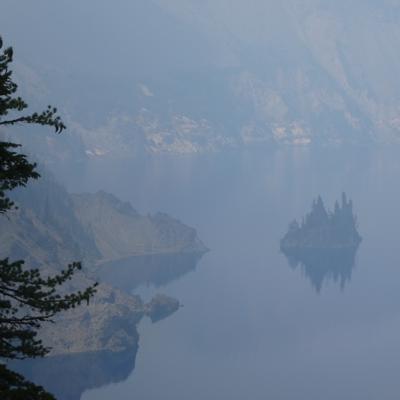
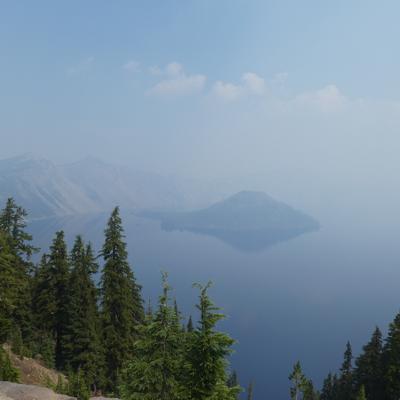
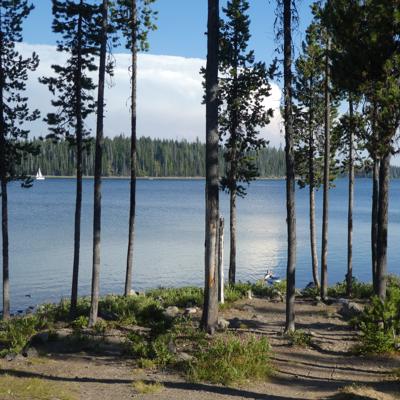
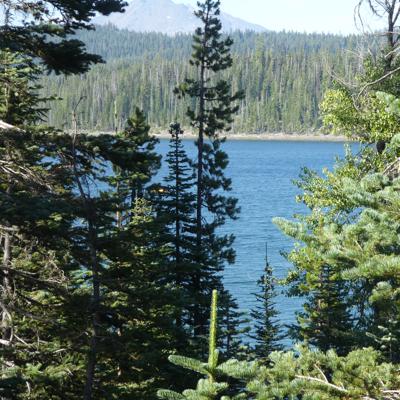
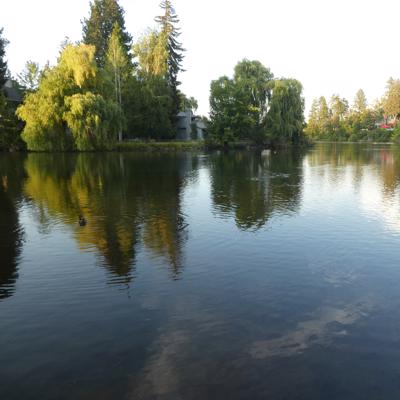
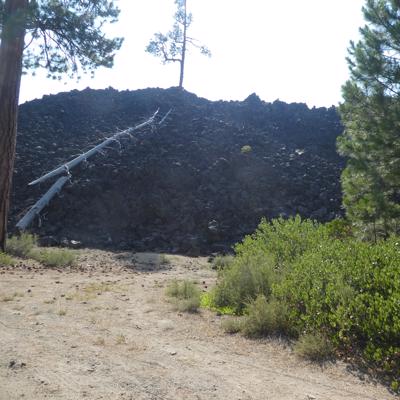
1.
A long journey
2.
Searching for dinosaurs
3.
Calgary stampede
4.
Calgary Olympic Park
5.
Rodeo
6.
From Calgary to Jasper
7.
Highway 5
8.
All the way to Whistler
9.
A lazy day in Whistler
10.
Rafting and bear hunting
11.
Relaxing in Whistler
12.
Over to Vancouver Island
13.
Discovering Mill Bay
14.
A day in Victoria
15.
Moving on to Seattle
16.
A Day in Mount Rainier National Park
17.
Moving to Oregon
18.
Powwow, lake and mountain
19.
Hell’s Canyon
20.
A journey through time
21.
A volcanic legacy
22.
Mountains, Rivers and Waterfalls
23.
A day in Portland
24.
A change of plan
25.
Arriving in San Francisco
26.
San Francisco sights
27.
Cycling the Golden Gate Bridge
28.
Our next adventure
29.
A day in Monterey
30.
Travelling along the Big Sur
31.
Hearst Castle to Lake Lopez
32.
Ropes, zip wires and boogie boards
33.
Fun at the water park
34.
Down the coast to Santa Barbara
35.
A day in Santa Barbara
36.
Next stop Malibu
37.
The end of the Pacific Highway
38.
Fun at Great Wolf Lodge
39.
National Park Time
40.
Giant trees
41.
Water holes and railroads
42.
Back to the coast
43.
Relaxing in Santa Cruz
44.
Around Santa Cruz
45.
Moving to Lake Tahoe
46.
Big lakes and little lakes
47.
A drive round Lake Tahoe
48.
Chilling out
49.
An unexpected dip
50.
A day by the lake
51.
A walk into Heavenly
52.
Back to The West Coast
53.
Shopping
54.
Jelly Belly factory
55.
Time for home
Share your travel adventures like this!
Create your own travel blog in one step
Share with friends and family to follow your journey
Easy set up, no technical knowledge needed and unlimited storage!